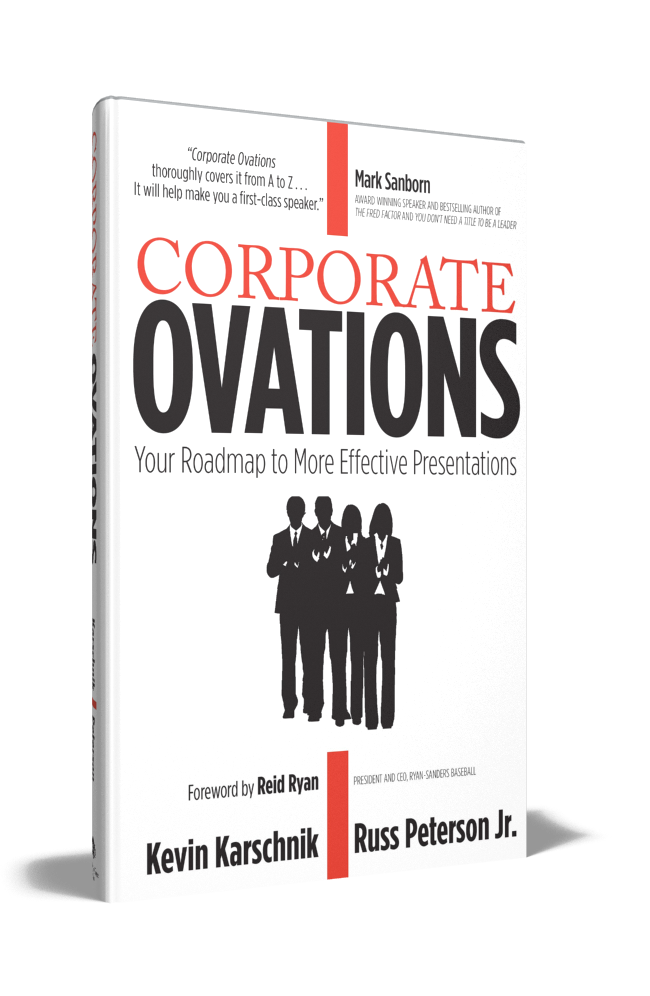I thought he was wrapping up his message but then he said, “… and we could also start reviewing the project timelines weekly… and also, we really need to look at… also, there’s a new way we could…” I was starting to wonder how many “alsos” we were going to get!

Where is the Bus Going?
This is the FIRST element you need to give to your audience. Most of us has been taught or we have learned by watching others that when you start a presentation, you should tell the audience what you’re going to cover in your message. Every audience wants to know where you plan on taking them. Admit it… if you were about to go on a tourbus but there were 20 buses all lined up and going to different locations, you’d ask the driver “Where are you going?” before you got on any bus!
The audience we speak to is no different. I’ll admit, when they show up to hear you speak, they probably have a good idea of what you’re going to share with them already, otherwise… why would they show up in the first place?!
But by starting with a brief note on where your message is going, you reassure them they will get what they came for! Similar to you being on a plane and the captain comes on before you push back from the gate and she says, “Well folks, we are bound for Houston today so if Houston is not in your plans, I suggest you exit now.”
The captain’s message just reassures every passenger… You showed up here today to get to Houston and that’s where I’m going to take you. That is a reassuring start to the journey. Let’s do the same for our audiences.
The next two elements your audience wants… structure and flow.
The SECOND Element is the Structure
Going back to the metaphor of you on a tour bus, let’s assume you’ve been riding on the bus now for about 90 minutes and the bus driver tour guide hasn’t said a word. About 60 more minutes into it someone yells out to the bus driver, “Hey, when are we gonna get there?” The bus driver replies with, “Ummmm, I’ll have to look. I didn’t really plan out a route for us today and I’m not quite sure where we are right now.”
Okay… how do you feel now? I’m guessing several emotions are flooding in and none of them are good. Just like you’d never want your tour guide bus driver to be unprepared with a route or lost, you’d never want your speaker to be unprepared with a structure to the message or lost in their own data.
Remember, what you bring to the stage is contagious. If you are nervous and anxious because you’re lost… your audience will soon feel the same.
A simple structure to a message is to give them 3 key points. There is some kind of magic in threes where humans like hearing it and it’s easy to remember. Just give them a structure you both can follow. One simple structure Kevin Karschnik teaches often is the “Past, Present, Future” structure.
The THIRD Element is the Flow
If flow is done poorly, you might get the never-ending story. Have you ever been in one of these presentations before? You’re not quite sure what the destination is and even if you did, you’re also not sure how far along the path you’ve already traveled! The two questions to start weighing on everyones’ minds are:
- Where are we exactly?
- Is this ever going to end?
When your audience can’t track with your message, they get lost. Now they have to make a decision… “Do I attempt to figure out where he is right now with this content or… do I give up and check my email on my phone?”
One of the simplest ways to create flow in your message is to deliver transitions between your key points. You can even recap the previous message, point them to the structure of what you told said you were going to give them, then transition into your next point.
Transitions serve as signs along the highway. If the bus were cruising down the road and you thought, “Huh… I wonder where we are right now. I was reading a message on my phone and I just started listening to the tour guide again. I wonder where we are in the tour?” and just then, we pass a sign on the side of the road and it tells you exactly what town we are leaving and which town we are entering.
You are transitioning from one city to the next. Now you know where you are located and neither you or the tour guide is lost. Simple transitions might sound like this, “So now that I’ve shared my past experience with you, let’s move on to what I’m doing now…”
It doesn’t take much to give the audience the structure and flow they crave, but it will take a little planning. Take the time to plan out a good route with transitions along the way.
Your audiences will thank you!
See you next week,
Russ
Let’s connect…
iSpeak teaches workshops on Professional Selling to help sales leaders gather the most important data and then use that information to create the right message. Are your sales presentations closing eyelids or deals?
Russ Peterson Jr. is the co-founder and Managing Director of iSpeak, Inc. – An award-winning professional development training company. Russ is a speaker, international trainer, and published author on Professional Sales Communication and Business Communication. He delivers workshops, keynotes, and personal communication coaching services to business professionals in the US and around the world. His leadership blog assists leaders in giving voice to their vision. You can connect with Russ directly through Twitter, Facebook and LinkedIn.



Please note: I reserve the right to delete comments that are offensive or off-topic.